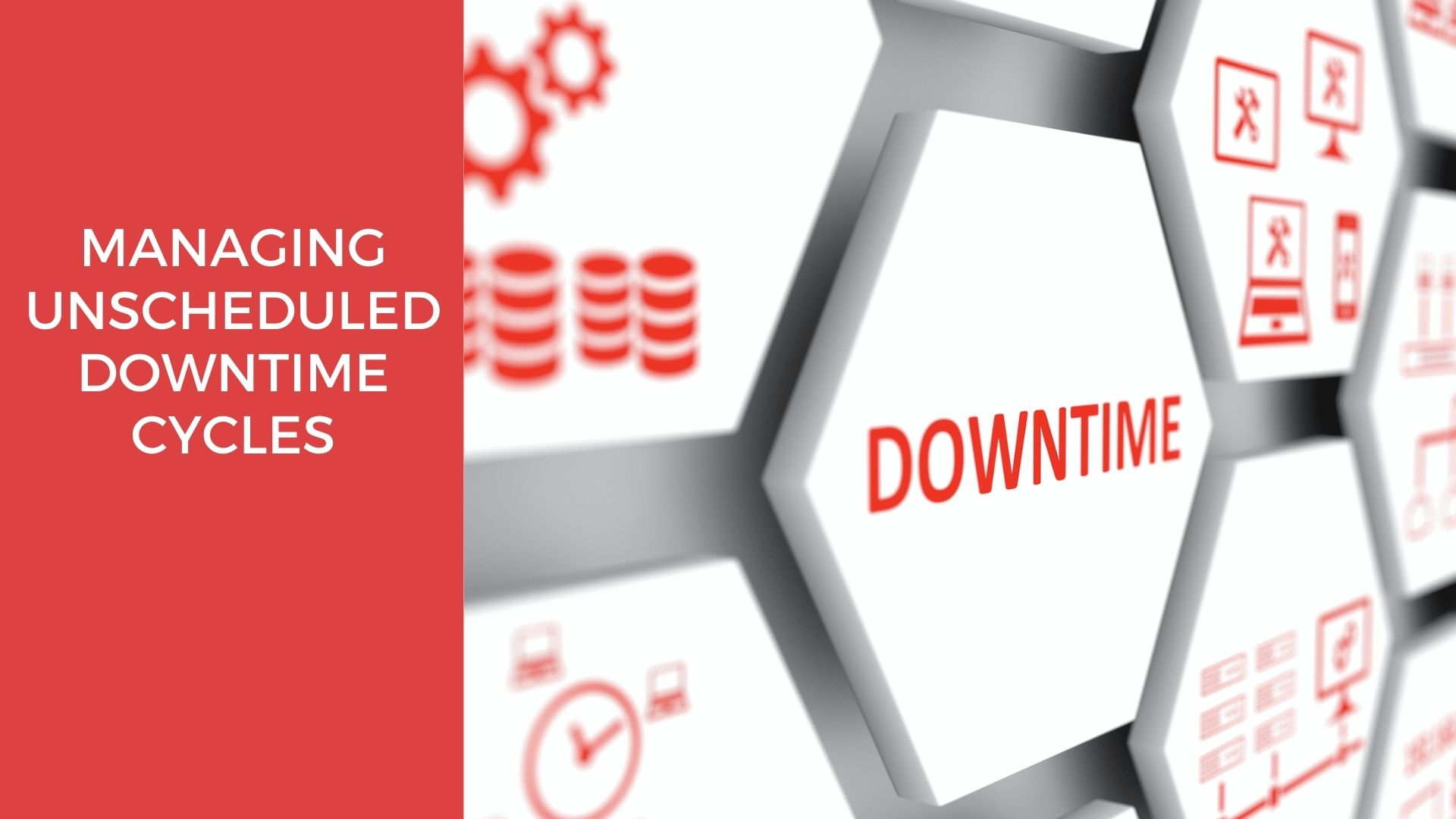
Maximizing Machine Efficiency with Proactive Maintenance
Pratik Lohiya |
22 Jan 2024 |
17:08 PM
- What is Proactive Maintenance?
- Why Is It Important?
- Proactive Maintenance vs. Preventive Maintenance
- Getting Started with Proactive Maintenance
- Steps for Implementation
- Types of Proactive Maintenance strategies
- Pros and Cons of Predictive Maintenance
- The Disadvantage of Predictive Maintenance techniques
- Maintenance Management
- Predictive Maintenance for Long-Term Efficiency
- Conclusion

Top 7 + Equipment Maintenance Software of 2023
Kirti Prakash 25 Jun 2024 | 12:10 PMThis essential guide covers everything you need to know about maintaining your equipment effectively. Learn about the best practices in preventive, predictive, and reactive maintenance to keep your machinery running smoothly. ...
In the dynamic landscape of industrial operations, the paradigm of maintenance has shifted towards a proactive approach, revolutionizing how businesses ensure the optimal functioning of their machinery. Proactive maintenance is a strategic methodology that emphasizes the anticipation and prevention of potential issues, contrasting with the traditional reactive models. This shift is not merely a trend but a fundamental transformation, recognizing the significance of staying ahead of equipment failures.
What is Proactive Maintenance?
Proactive maintenance is a systematic and preemptive strategy aimed at identifying and mitigating potential issues before they escalate into major problems. Unlike reactive maintenance, which addresses breakdowns after they occur, proactive maintenance involves continuous monitoring, analysis, and adjustment of equipment to prevent failures. This approach leverages data-driven insights, predictive analytics, and modern technologies to enhance overall equipment reliability and performance.
Why Is It Important?
The importance of proactive maintenance lies in its ability to maximize operational efficiency and minimize downtime. By addressing potential issues before they disrupt production, businesses can avoid costly repairs and ensure a smooth workflow. Moreover, optimizing maintenance schedules contributes to the extended lifespan of equipment, reducing the frequency of replacements and promoting sustainability. As industries evolve, embracing equipment maintenance not only ensures a competitive edge but also fosters a culture of efficiency and innovation in the ever-evolving landscape of industrial operations.
Proactive Maintenance vs. Preventive Maintenance
As far as equipment upkeep is concerned, distinguishing between proactive and preventive maintenance is crucial for optimizing operational efficiency. Preventive maintenance involves scheduled inspections and routine tasks to forestall potential issues. While it's valuable in averting common problems, it may lack the precision of its proactive counterpart.
Proactive maintenance, on the other hand, takes a more dynamic approach. It relies on real-time data, analytics, and predictive technologies to identify potential failures before they occur. This anticipatory strategy not only reduces unexpected breakdowns but also enhances the overall reliability and performance of machinery.
When comparing the two, preventive maintenance stands out for its ability to tailor maintenance activities based on actual equipment conditions. It's a forward-thinking strategy that shifts the paradigm from merely preventing known issues to predicting and preventing a broader range of potential problems.
Getting Started with Proactive Maintenance
Initiating a preventive maintenance journey necessitates a strategic mindset. Foster organizational awareness regarding the significance of preventive maintenance and assemble a diverse team with expertise in the nuances of equipment care.
Determine the assets requiring proactive attention by evaluating current maintenance tasks and comparing them against industry benchmarks. An integral part of this process involves revisiting manufacturer instructions and integrating them into updated maintenance procedures. Through the systematic implementation of these steps, organizations can shift from reactive firefighting to a predictive maintenance culture. This transition significantly improves equipment reliability and enhances overall operational efficiency by prioritizing preventive maintenance tasks.
Steps for Implementation
In the journey toward implementing predictive maintenance plan, a systematic approach is paramount. Each step is a strategic move toward a more reliable operational framework.
-
Be Aware of the Need for Proactive Maintenance: The foundation of proactive maintenance lies in understanding its necessity. Recognizing the limitations of reactive measures and the potential benefits of a proactive strategy leads to maximizing efficiency of machineries.
-
Create a Diverse Team for Predictive Maintenance: Building a diverse team is akin to assembling a well-equipped task force. By bringing together maintenance professionals, data analysts, and technology specialists, a multidisciplinary team ensures efficient equipment upkeep.
-
Identify Assets Undergoing Proactive Maintenance: A critical step involves identifying assets that demand proactive attention. This process entails prioritizing equipment based on their impact on production and the potential consequences of failure, ensuring a targeted and efficient preventative maintenance strategy.
-
Review Current Maintenance Practices: An introspective evaluation of current maintenance schedules is essential. This involves analyzing historical data on equipment failures and downtime to pinpoint recurring issues. This review sets the stage for refining and optimizing existing procedures.
-
Check Industry Best Practices and Manufacturer's Instructions: Staying abreast of industry standards and manufacturer guidelines is crucial. By checking industry best practices and adhering to manufacturer instructions, organizations ensure that their proactive maintenance strategy is aligned with recognized benchmarks and optimized for success.
-
Revise Maintenance Instructions and Prepare for Implementation: The final step culminates in the revision of maintenance instructions. Developing a proactive maintenance plan that incorporates preventive, predictive, and condition-based elements is key. Adequate preparation, including training and resource allocation, is crucial for a seamless implementation.
By diligently following these steps, organizations not only embrace the shift from reactive to proactive maintenance but also lay the groundwork for enhanced reliability, reduced unplanned downtime, and maximizing efficiency.
Types of Proactive Maintenance strategies
In proactive maintenance, organizations employ various strategies to ensure the optimal performance of their assets. Understanding these types is essential for crafting a comprehensive maintenance plan that aligns with specific operational needs.
Condition-Based Maintenance
Condition-Based Maintenance stands as a pinnacle of predictive maintenance strategies. Unlike traditional time-based approaches, it relies on real-time data and continuous monitoring to assess the actual condition of equipment. By analyzing performance indicators, organizations can pinpoint potential issues and schedule maintenance precisely when needed, maximizing efficiency and minimizing downtime.
Scheduled and Routine Maintenance
Scheduled maintenance form the backbone of preventive maintenance strategies. These planned interventions involve systematically inspecting, cleaning, and adjusting equipment at predefined intervals, maximizing efficiency. This type of maintenance helps organizations address potential issues before they become critical, contributing to the overall reliability and longevity of assets.
Pros and Cons of Predictive Maintenance
Benefits of Predictive Maintenance
Predictive maintenance offers a myriad of advantages that redefine how organizations approach equipment upkeep.
-
Minimized Downtime: By predicting potential failures before they occur, organizations can schedule maintenance precisely when needed, minimizing unplanned downtime and ensuring uninterrupted operations.

-
Optimized Costs: Predictive maintenance allows for efficient resource allocation. By addressing issues proactively, organizations can avoid unnecessary repairs, reduce overall maintenance costs, and extend the lifespan of critical assets.
-
Increased Equipment Lifespan: Continuous monitoring and data-driven insights contribute to the longevity of equipment. Predictive maintenance enhances the reliability of assets, ensuring they operate at peak performance for an extended period.
-
Enhanced Safety: Anticipating and preventing potential failures contributes to a safer working environment. Predictive maintenance minimizes the risk of unexpected equipment malfunctions, safeguarding both personnel and assets.

The Disadvantage of Predictive Maintenance techniques
While predictive maintenance offers numerous benefits, it's essential to acknowledge potential challenges.
-
Initial Implementation Costs: Setting up a predictive maintenance system requires an initial investment in technology, training, and infrastructure. Organizations need to weigh the upfront costs against the long-term benefits.
-
Data Dependency: Predictive maintenance relies heavily on accurate and timely data. Inadequate or inaccurate data can compromise the effectiveness of predictions, leading to potential challenges in implementation.
-
Complexity in Implementation: Implementing predictive maintenance involves a learning curve. Organizations may face challenges in integrating new technologies and ensuring that personnel are proficient in using predictive analytics tools.
-
Limited Applicability for Some Assets: Not all assets may be equally suited for predictive maintenance. Some equipment may have limited data availability or may not exhibit clear failure patterns, making predictive strategies less effective.
Maintenance Management

Maintenance Management is a comprehensive approach to planning, organizing, and controlling all activities related to an organization's maintenance functions. It involves the coordination of resources, personnel, and technologies to ensure the efficient and effective upkeep of assets, facilities, and equipment.
At its core, maintenance management aims to maximize equipment reliability, minimize downtime, and optimize resource allocation. This strategic discipline encompasses various maintenance strategies, including preventive, predictive, and condition-based approaches, tailored to meet the specific needs of an organization.
Predictive Maintenance for Long-Term Efficiency
Predictive maintenance plays a pivotal role in maximizing the lifespan of critical equipment, emphasizing long-term efficiency. Utilizing real-time data, sensors, and predictive analytics, organizations can proactively address potential failures, extending the operational life of assets. This approach optimizes resource utilization and contributes to substantial cost savings over time.

Understanding the basics of predictive maintenance involves continuous real-time monitoring, data analysis using predictive analytics tools, and a condition-based approach that deviates from traditional time-based maintenance. By adopting predictive maintenance, organizations empower proactive decision-making, enabling strategic planning and interventions to minimize downtime and operational disruptions.
Conclusion
Predictive maintenance emerges as a transformative force in the realm of industrial operations, reshaping the traditional approach to asset management. By blending predictive insights, real-time monitoring, and strategic planning, organizations can unlock unparalleled efficiency, maximize equipment lifespan, and minimize unplanned downtime. The synergy of diverse maintenance strategies, from preventive to predictive, creates a resilient maintenance culture.

As technology advances and industries evolve, embracing proactive maintenance is not merely a choice but a strategic imperative. It propels organizations into a future where operational excellence is not a goal but a continuous journey, ensuring sustained success in an ever-changing landscape.